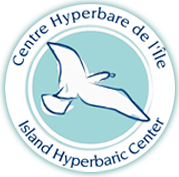Stroke Incidence of Stroke (lifetime)
Stroke, the third leading cause of death in the United States and the leading cause of adult disability, can be catastrophic for the afflicted individual.
Brain injury from ischemic stroke can be devastating, but full brain restoration is feasible. Time until treatment is critical; rapid rate of injury progression, logistical and personnel constraints on neurological and cardiovascular assessment, limitations of recombinant tissue plasminogen activator (rtPA) for thrombolysis, anticoagulation and antiplatelet interventions, and neuroprotection all affect outcome. Promising acute neuroprotectant measures include albumin, magnesium, and hypothermia
Hyperbaric oxygen therapy (HBOT), widely used as a treatment for the “bends” in divers , was later applied to carbon monoxide-poisoned patients and to wound healing. HBOT involves bathing the individual in 100-percent oxygen at greater than normal atmospheric pressure. This causes additional oxygen to dissolve in the blood, thereby increasing the amount of oxygen available to the cells – particularly brain cells in the case of stroke. HBOT can be safely instigated in acute stroke patients within hours after stroke onset.
HBOT is considered to hold great potential for stroke rehabilitation.
